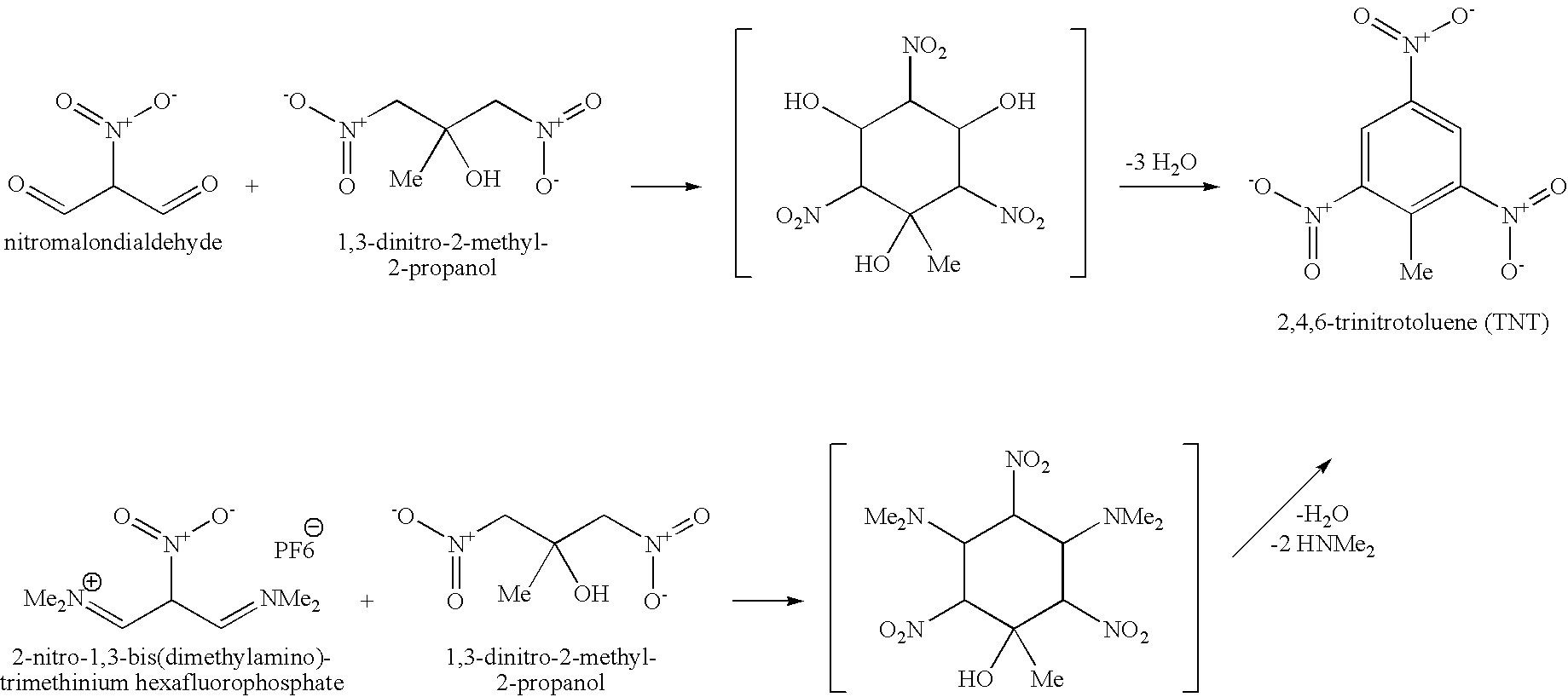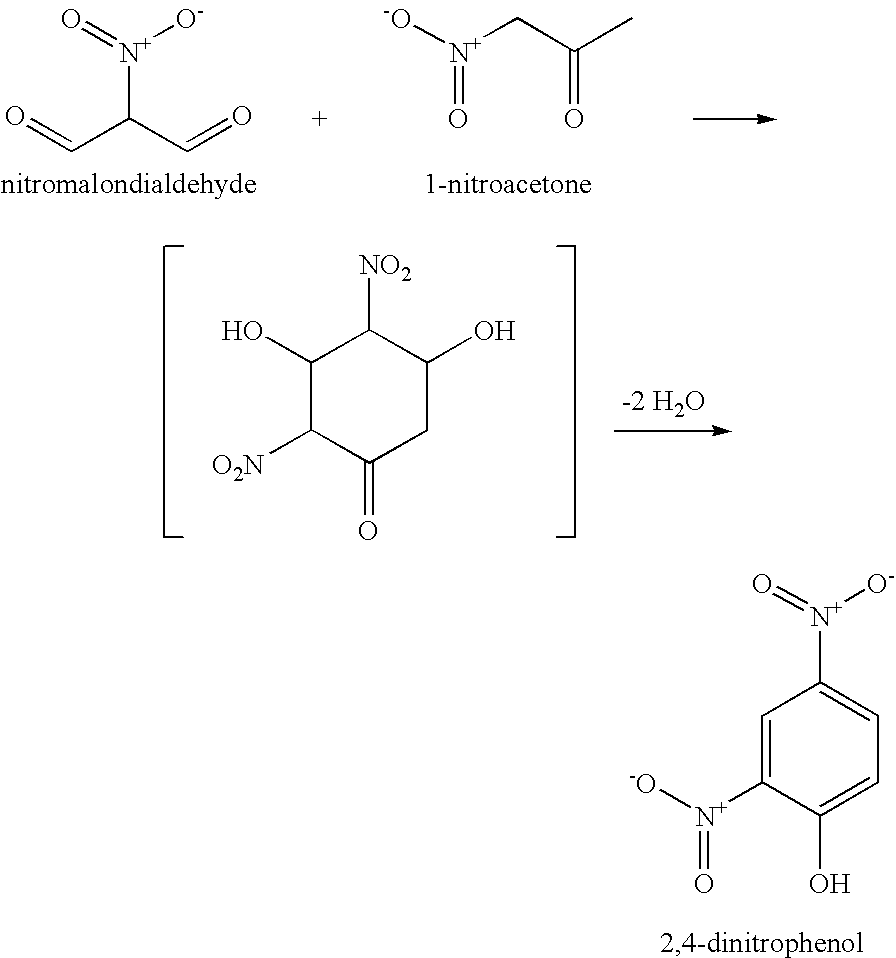2,4-dinitrophenol and environmentally friendly methods for making the same
a dinitrophenol and dinitrophenol technology, applied in the field of 2,4-dinitrophenol and environmentally friendly methods for making the same, can solve the problems of high toxicity of washing, high cost of destruction (incineration), and report does not teach nor suggest the use of dinitro-compounds to make trinitro aromatics
- Summary
- Abstract
- Description
- Claims
- Application Information
AI Technical Summary
Problems solved by technology
Method used
Image
Examples
Embodiment Construction
[0009]The present invention relates to methods for making 2,4,6-trinitrotoluene (TNT) compounds, picric acid explosives, and 2,4-dinitrophenyl compounds by utilizing environmentally friendly cyclodehydrative condensation mechanisms.
[0010]Embodiments of the present invention include an environmentally friendly method for making 2,4,6-trinitrotoluene (TNT) compounds comprising, providing nitromalondialdehydes, providing dinitro-compounds, reacting the nitromalondialdehydes with the dinitro-compounds to produce aldol- intermediate compounds, and subjecting the intermediate compounds to a cyclodehydrative mechanism to produce 2,4,6-trinitrotoluene (TNT) compounds in an environmentally friendly manner. These embodiments of the present invention include the nitromalondialdehydes comprising about 26 to about 53 weight % and the dinitro-compounds comprising about 47 to about 74 weight %. In other embodiments, the dinitro-compounds comprises at least one of 1,3-dinitro-2-methyl-2-propanol or...
PUM
| Property | Measurement | Unit |
|---|---|---|
| Percent by mass | aaaaa | aaaaa |
| Percent by mass | aaaaa | aaaaa |
| Percent by mass | aaaaa | aaaaa |
Abstract
Description
Claims
Application Information
 Login to View More
Login to View More - R&D
- Intellectual Property
- Life Sciences
- Materials
- Tech Scout
- Unparalleled Data Quality
- Higher Quality Content
- 60% Fewer Hallucinations
Browse by: Latest US Patents, China's latest patents, Technical Efficacy Thesaurus, Application Domain, Technology Topic, Popular Technical Reports.
© 2025 PatSnap. All rights reserved.Legal|Privacy policy|Modern Slavery Act Transparency Statement|Sitemap|About US| Contact US: help@patsnap.com



